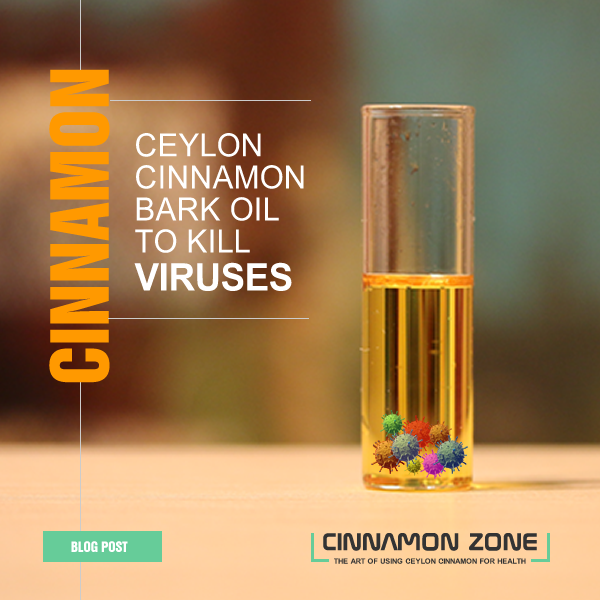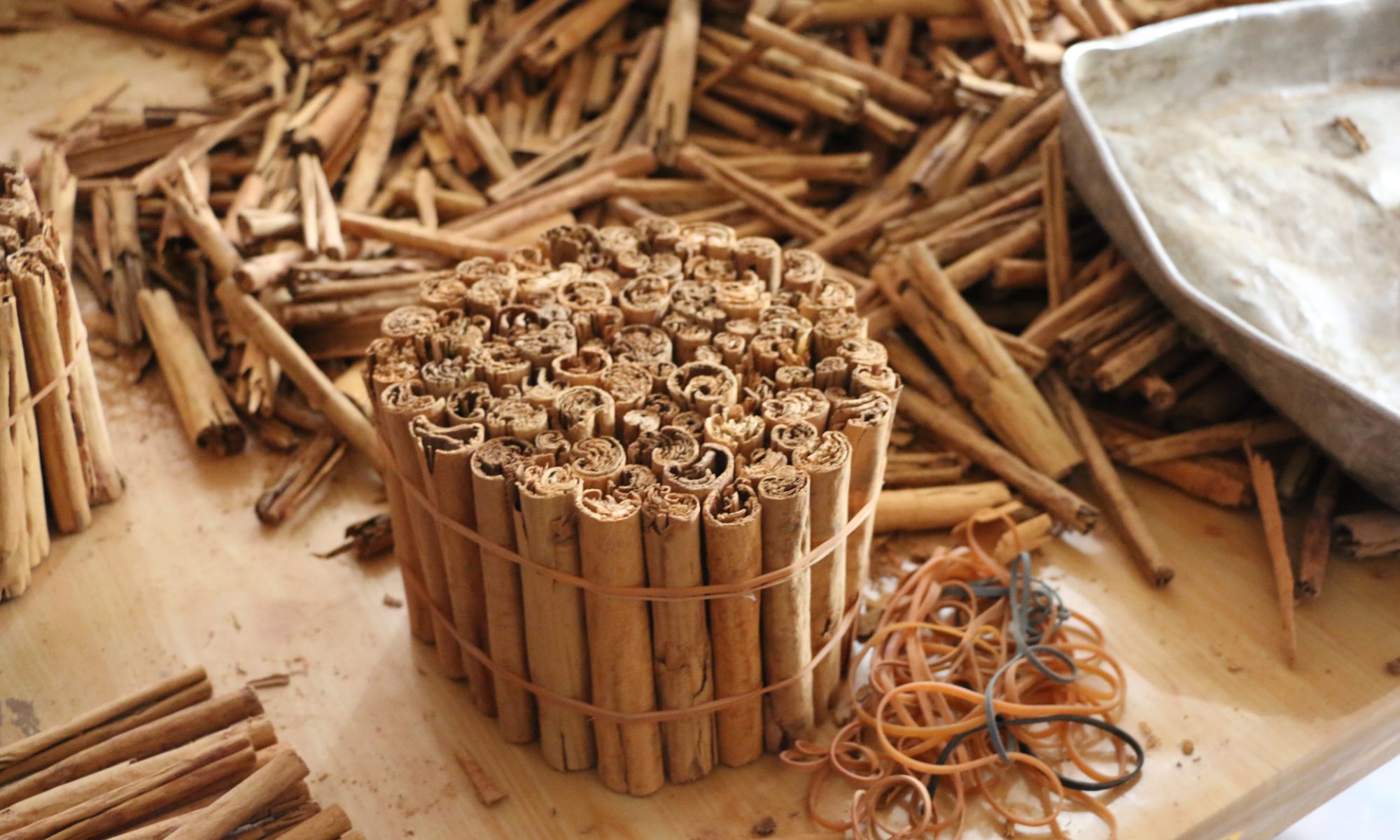
There is increasing evidence that Cinnamon kills viruses. Antibiotics do not work against viruses because they are not alive. A bacteria is a reproducing life form. A virus are DNA/RNA fragments on a protein coat that has injected itself into a living cell and gets that cell to reproduce. That means killing those cells will essentially kill you. A viral drug works by stopping the viruses injecting themselves into the cells. A bacteria by comparison stands separate from a cell and can therefore be isolated and killed separately without killing the cell.
With advent of the Ebola virus and other pandemics like SARS perhaps it is time to look for a natural solution. One such solution for a possible anti viral drug to kill a virus is cinnamon. Specifically Ceylon Cinnamon Bark Oil and maybe even Ceylon Cinnamon Leaf Oil. This would the super concentrated Cinnamon from the Cinnamon bark and the cinnamon leaves.
Cinnamon Bark Oil, distilled from the bark of the Ceylon Cinnamon Tree has high levels of Cinnamaldehyde (about 40%-60%) known for it’s wonderful medicinal properties from blood sugar control to powerful anti-bacterial properties that can penetrate the brain blood barrier when taken internally.
Cinnamon leaf Oil distilled from the leaves of the tree has much less cinnamaldehyde (about 15%) but it has another magical ingredient, Eugenol (about 40-75%) which is also an extremely powerful bacteria killer. The Leaf Oil is not as refined as the Bark Oil or smell as nice, but it’s much cheaper and great for topical applications, especially to kill anti biotic resistant bacteria. If you have gone for a hospital stay, this is the thing to take because it is effective against so many antibiotic resistant bacteria.
Cinnamon kills a virus we say? Yes. So while Cinnamon has been known mostly for its powerful anti-bacterial properties, it is becoming evident that it could also be a virus fighter. Legend has it that during the 1918 influenza outbreak, workers at cinnamon factories seemed immune to the Spanish flu which decimated the population. According to this Stanford University article a popular remedy for the Spanish flu (a virus) was cinnamon in powder or oil form mixed with milk to reduce temperature.
So what is the evidence for Cinnamon as a Virus fighter? Well here it is.
1. HIV and Cinnamon
An Indian study based out of Pune India claimed that a Cinnamon derived procyanidin polymer can turn HIV infected people into HIV controllers (those who carry the Virus but do not develop full blown AIDS). Apparently they extracted a molecule (which remains unknown) which protects an important defense protein by neutralizing the HIV virus. While not a cure they suggest this polymer could enhance the immune response system against HIV.
This survey of Indian plants for HIV found two varieties of Cinnamon Cinnamomum cassia and Cardiospermum helicacabum, have compounds that are effective against HIV-1 and HIV-2. While this study was not done with Ceylon Cinnamon, the probability it applying to Ceylon Cinnamon is reasonable. Besides Cassia Cinnamon has high levels of Coumarin which can damage your liver.
2. Adenovirus and Cinnamon
Cinnamon is a common a common ingredient in traditional Asian herbal medicine, particularly for chest related ailments. This study shows that cinnamaldhye (found especially high in distilled Cinnamon Bark Oil) is effective against the adenovirus, a respiratory illness. Symptoms of respiratory illness caused by the adenovirus infection range from the common cold syndrome to pneumonia, croup, and bronchitis, diarrhea, pink eye, fever, bladder inflammation and neurologic disease.
3. Baculuvirus
In this Japanese study, cinnzeylanine, isolated from Cinnamomum Zeylanicum (Ceylon Cinnamon), inhibited the proliferation of a baculovirus
4. Herpes and Cinnamon
Another study in 2000 found Eugeol (the common ingredient in Ceylon Cinnamon Leaf Oil) was virucidal and showed no cytotoxicity at the concentrations tested. Meaning it was effective against HSV-1 and HSV-2 (Herpes) at doses of 25.6 & 16.2 microg/mL.
So can we conclude that Cinnamon is effective as a virus fighter? All we can say it is early days. What this shows is that both Cinnamaldehye (from steam distilling the bark) and Eugenol (from steam distilling cinnamon leaf) are both effective, albeit for different strains of viruses.
Dr. Mercola references Professor Michael Ovadia in 2007, a spiritual scientist from Tel Aviv University, as having has signed a research and license deal on his patent-pending cinnamon extract, which has potent anti-viral properties. Nothing has come out of it yet.
The main thing we can learn from this is Cinnamon has the potential to be an antiviral. A little bit of Cinnamon, taken in moderation as part of overall program of moderate exercise and a health diet is really all we can do. We tend to think of Cinnamon as a preventer as opposed to a cure and that is the approach we should all use. The Chinese had this saying; you fire your doctor if they get you sick but keep them as long as you remain healthy.
HOW TO TAKE CINNAMON TO KILL A VIRUS
All the research is fine a dandy, but how do you take it to kill a Virus you ask. You can’t really swallow some Cinnamon Bark Oil or Leaf Oil hope it does the trick. Cinnamon Oils are so powerful, that more than a drop or two might burn your insides.
If you do take Cinnamon Bark Oil or leaf oil you should consult a medical professional. And only use good quality Cinnamon Oil. Technically both Cinnamon leaf oil and bark oil can be taken internally provided they are steam distilled to a high quality with high levels of cinnamaldehyde (in Cinnamon Bark this should be 40% and up) or high levels Eugenol (in cinnamon leaf oil this should be 70% and up). There are also some good books on Amazon on essential oils that you can try to follow.
